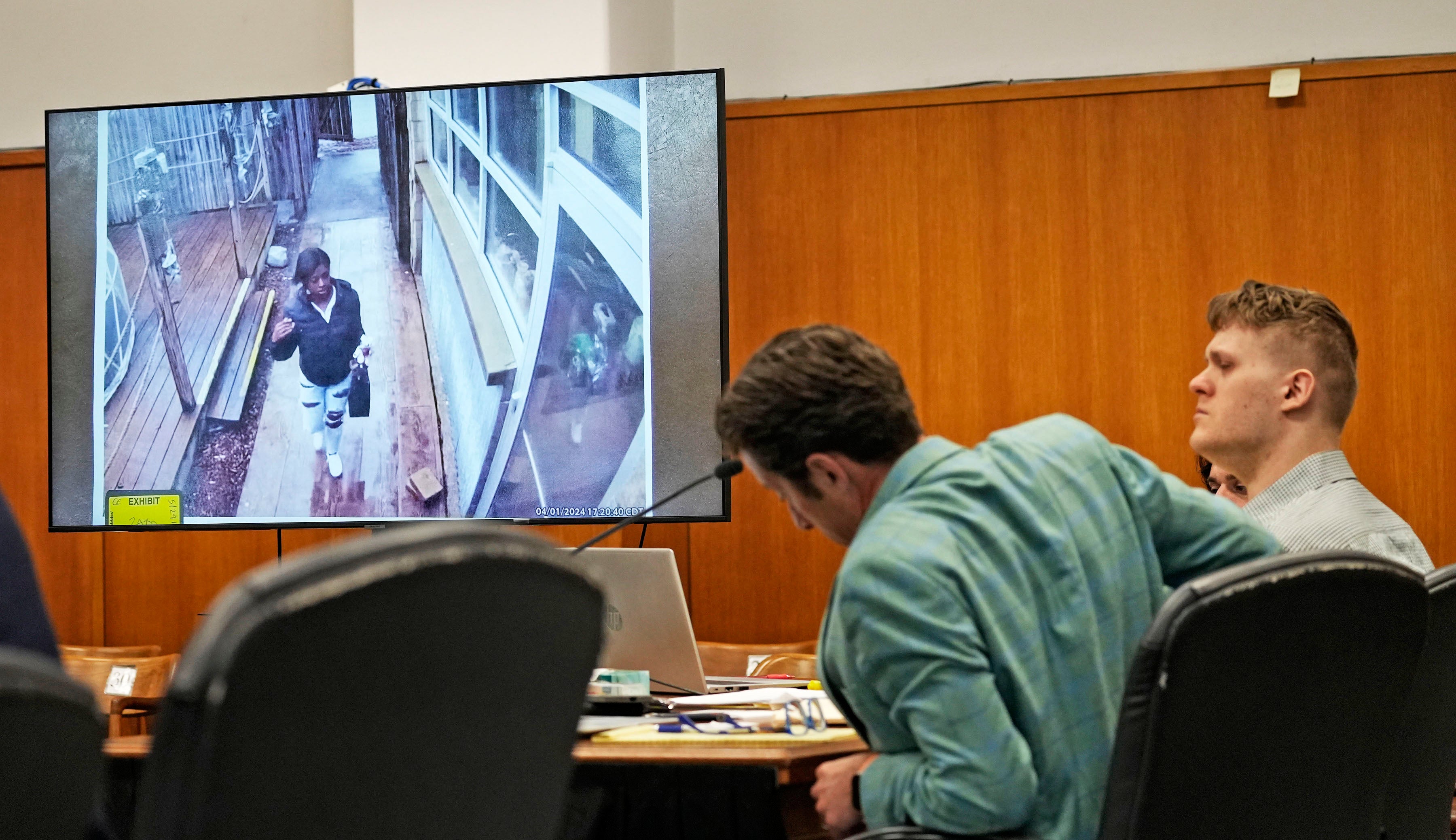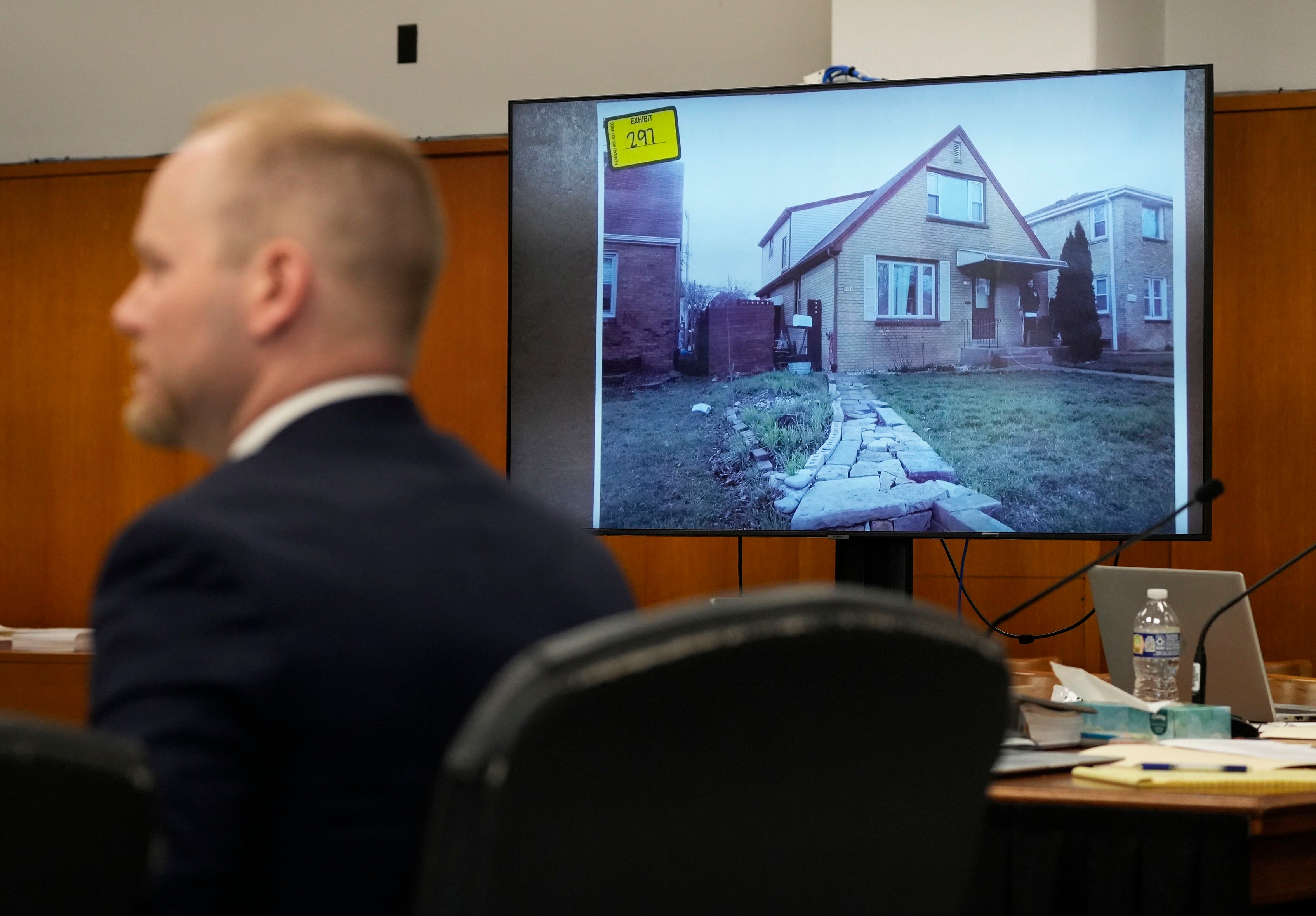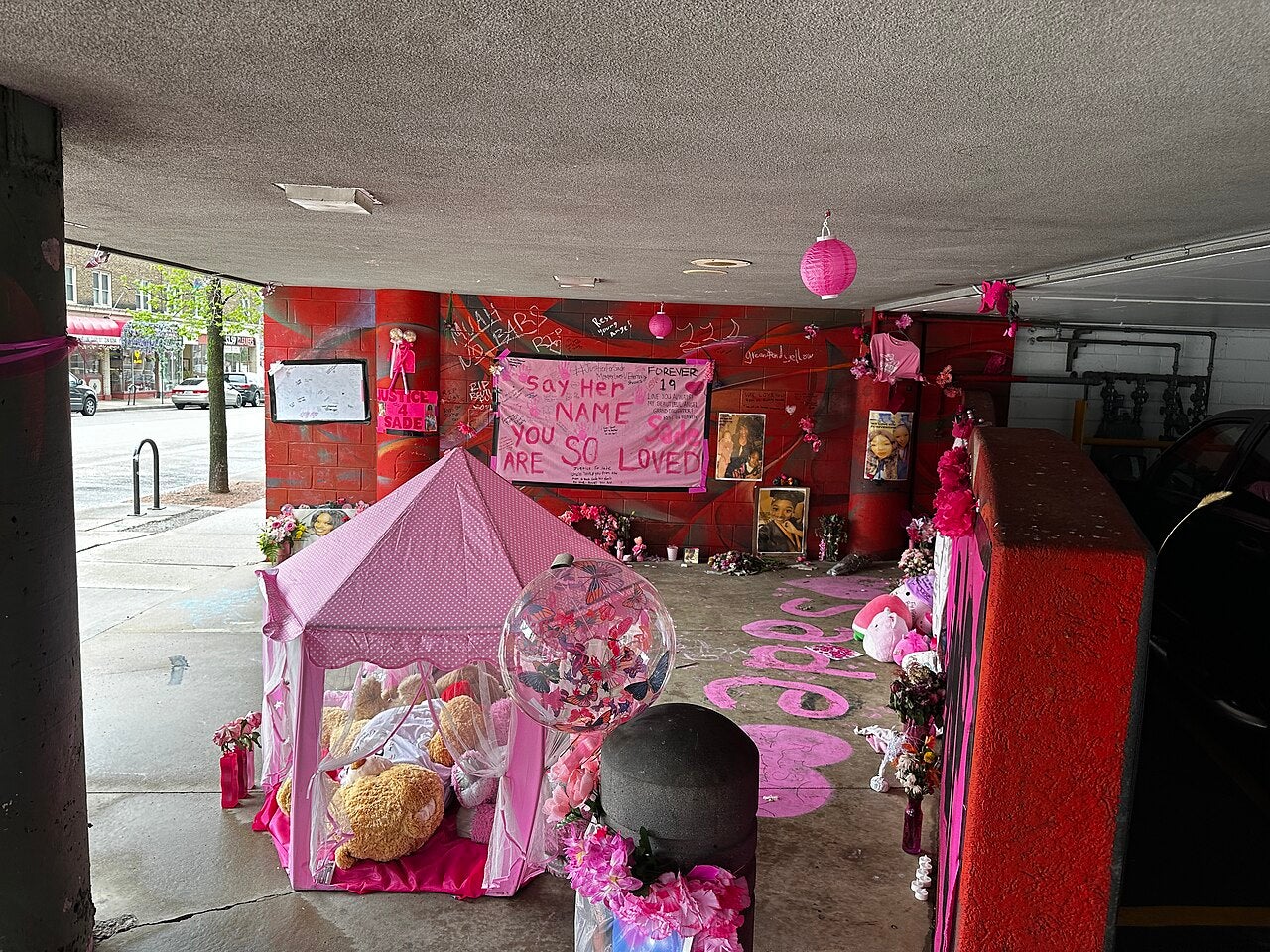Nineteen-year-old Sade Robinson was excited about her first date with a new guy she’d met while out with friends. But it quickly turned into a nightmare, with the Milwaukee college student never returning home from dinner and drinks.
The very next day, April 2, 2024, Robinson’s leg was discovered on the shores of Lake Michigan in Cudahy’s Warnimont Park – her toes still coated with pink polish. Her car was found set on fire, and Maxwell Anderson, the 34-year-old man she went out with, was spotted on security cameras at a nearby bus station.
On Friday, Anderson was found guilty of first-degree intentional homicide, mutilating a corpse, hiding a corpse, and arson in the grisly slaying, after a two week trial.
The details of the case are gruesome — Robinson was dismembered, her body parts, including her torso and her right breast, were scattered across Milwaukee County. Her head, however, has still not been recovered.
Robinson’s murder stunned the community, reignited a national conversation about the disproportionate violence Black women face, and left a grieving mother fighting for more than just a conviction.

‘She was just going on a date’
On April 1, 2024, Robinson went on a first date with Anderson at the Twisted Fisherman restaurant in Milwaukee’s Menomonee Valley and then the pair went to Dukes on Water for drinks.
Surveillance video would later show her vehicle in several parts of the city that night and into the early hours of April 2. But the teenager was nowhere to be seen.
When Robinson didn’t show up for her job at the Pizza Shuttle the next day, her co-workers called the police and reported her missing.
Her mother, however, wouldn’t be notified for two more days. Once contacted by law enforcement, Sheena Scarbrough was able to assist them with tracking down her daughter’s cell phone.

The mother and daughter had been tracking each other’s phones for safety — a priority Scarbrough had for her two daughters, especially living in a state where Black women were 20 times more likely to be murdered than their white peers, according to a 2024 Columbia University report.
Robinson, who was studying criminal justice at Milwaukee Area Technical College with dreams of joining the military, had an easy smile and a fierce work ethic, her mother said.
“She was just going on a date,” Scarbrough told Fox6.
“I was looking forward to experiencing her adulthood with her. Both my daughters — I wanted to see what they would become.”
Chilling evidence unfolds in court
Maxwell Anderson “brutally and callously” killed and dismembered Robinson hours after the two shared dinner last spring, prosecutors told the jury at the beginning of the trial.
“He then brutally and callously cut her apart, disposed of her body parts and burned her car,” Milwaukee County Assistant District Attorney Ian Vance-Curzan said.
In the first days of the trial, prosecutors presented chilling digital breadcrumbs: license plate readers, surveillance images, and a man they identified as Anderson walking away from Robinson’s burned-out car near 30th and Lisbon.
Video footage showed the pair meeting for dinner and drinks at the restaurant and then at the bar before going to Anderson’s home on the city’s south side.

There was “on-and-off” movement at Anderson’s house on the night of April 1, 2024 until 12:45 a.m. on April 2, 2024, according to a neighbor’s video presented by prosecutors.
Phone records then show Robinson’s phone traveling around the city of Milwaukee before “eventually ending up apparently stationary near Warnimont Park, where the severed leg was recovered,” according to the criminal complaint. Police said they believed the leg appeared to be “sawn off.”
After Robinson went missing, her friend was able to use Life360, a location-based services app on her phone, which allows users to share their location, Urban Milwaukee reported.
That app showed the phone was near Anderson’s home on the city’s south side on the night of the date and then at Warnimont Park on the morning of April 2, 2024.
That same morning, the Milwaukee Fire Department responded to a vehicle fire on the city’s north side. The car belonged to Robinson.
Surveillance video footage from a Milwaukee County Transit System bus, also from that morning, showed Anderson boarding a nearby bus shortly after Robinson’s car was set on fire.

Weeks later, on May 11, 2024, Robinson’s right arm washed ashore in Waukegan, Illinois, according to Vance-Curzan.
Anderson’s defense attorney Anthony Cotton didn’t dispute that his client went on a date with Robinson or that the dismembered body parts belonged to Robinson. But he argued that Anderson had no reason to kill the woman.
“There is absolutely no reason for Max to commit a crime like this,” Cotton said during his opening statement.
“We don’t dispute any of that timeline, that they went out together and went back to Max’s house. But that doesn’t mean he [Anderson] killed her,” Cotton said.
Anderson did not testify and his defense team did not present any witnesses.
During a search of Anderson’s home, while investigators did not “locate any kind of gory scene in the residence,” Vance-Curzan said they did find a photo on Anderson’s phone of Robinson laying face down on his couch and another photo that shows Robinson’s pants and underwear being pulled off her body.
“And police actually did find those pants and underwear in the trunk of her car after it had been burned,” Vance-Curzan said.
Vance-Curzan also told the jury that Warnimont Park, where Robinson’s severed leg was found, was a place Anderson had known well and a place he had called his “secret beach.”
“One does not end up going out to dinner and then going out for drinks on Water Street for a good time, to being dead and cut up into pieces and discarded into Lake Michigan, unless someone intends for that to happen,” Vance-Curzan said.

Anderson had planned to kill Robinson weeks before her death, according to a statement from a “confidential informant,” noted in court filings FOX6 News obtained.
The informant told police that when they were at Anderson’s home on March 5, he showed the informant his basement, where there was a plastic tarp covering a sanitation sink, along with the ceiling, floor and the walls, according to the filings. The informant also noticed three saws.
Anderson allegedly told the informant that he “intended to kill Sade Robinson.”
He went on to say, according to the filings, that he would use a gun to force her down into the basement and then he “planned on shooting Robinson and then dismember her body in the room” before “disposing Robinson’s body throughout the city.”
A search warrant also revealed that prosecutors believe Anderson tried to cover up Robinson’s death with a text message.
On the morning of April 4, 2024, police arrested Anderson during a traffic stop near his home. He has been in custody since his arrest, held on a $5 million bond.
Sade’s voice gets heard
Robinson’s death is not just a tragedy — it’s a cautionary tale.
There have been nine domestic violence homicides in Milwaukee this year, according to data gathered by the Sojourner Family Peace Center. In 2024, there were at least 34 domestic violence homicides – and Robinson was one of those victims.
Scarbrough knew she wanted to turn her pain into advocacy – with the hope that no other mother would have to wait 48 hours to find out their daughter has been reported missing.
Weeks after Robinson’s death, Scarbrough stood with her younger daughter, Adriana, who accepted her sister’s posthumous degree in criminal justice from Milwaukee Area Technical College. And then she got to work.
Scarbrough launched Sade’s Voice Foundation, a nonprofit aimed at protecting young people and supporting families enduring the unthinkable.
“For all of the other missing and murdered Black, indigenous people of color,” Scarbrough said.

Scarbrough has also partnered with Wisconsin lawmakers, including State Rep. Shelia Stubbs, who has pledged to reintroduce legislation that would strengthen police response to missing persons — especially Black women and girls.
In Massachusetts, a bill introduced by Rep. Bud Williams would create a statewide task force to improve how law enforcement handles cases involving missing Black women.
Minnesota, California, New York, and Illinois have already taken similar steps — with varying degrees of success. Wisconsin has yet to pass such a bill.
Organizations like the Black and Missing Foundation Inc. and Our Black Girls have been instrumental in amplifying underreported cases.

“It is her voice, her legacy to honor and carry what she was about,” Scarbrough said about her daughter. “She has saved so many young women and individuals. My baby is a hero.”
Scarbrough previously referred to Anderson as a “demonic entity.”
As testimony against him unfolded in court, as did the story of who Sade Robinson was — and who she was meant to be.
“She had such a light,” Scarbrough said. “And even now, I believe that light’s still working.”




